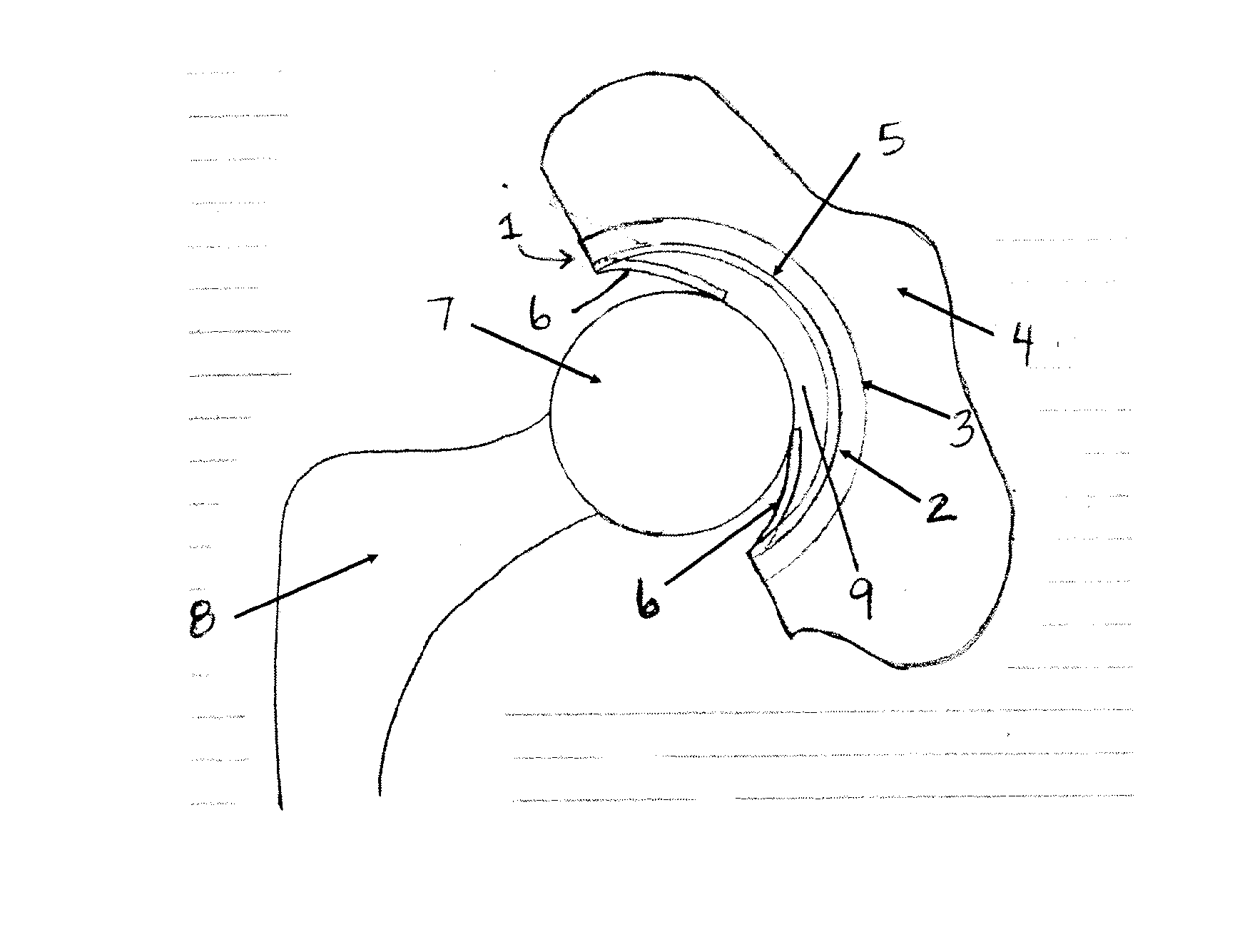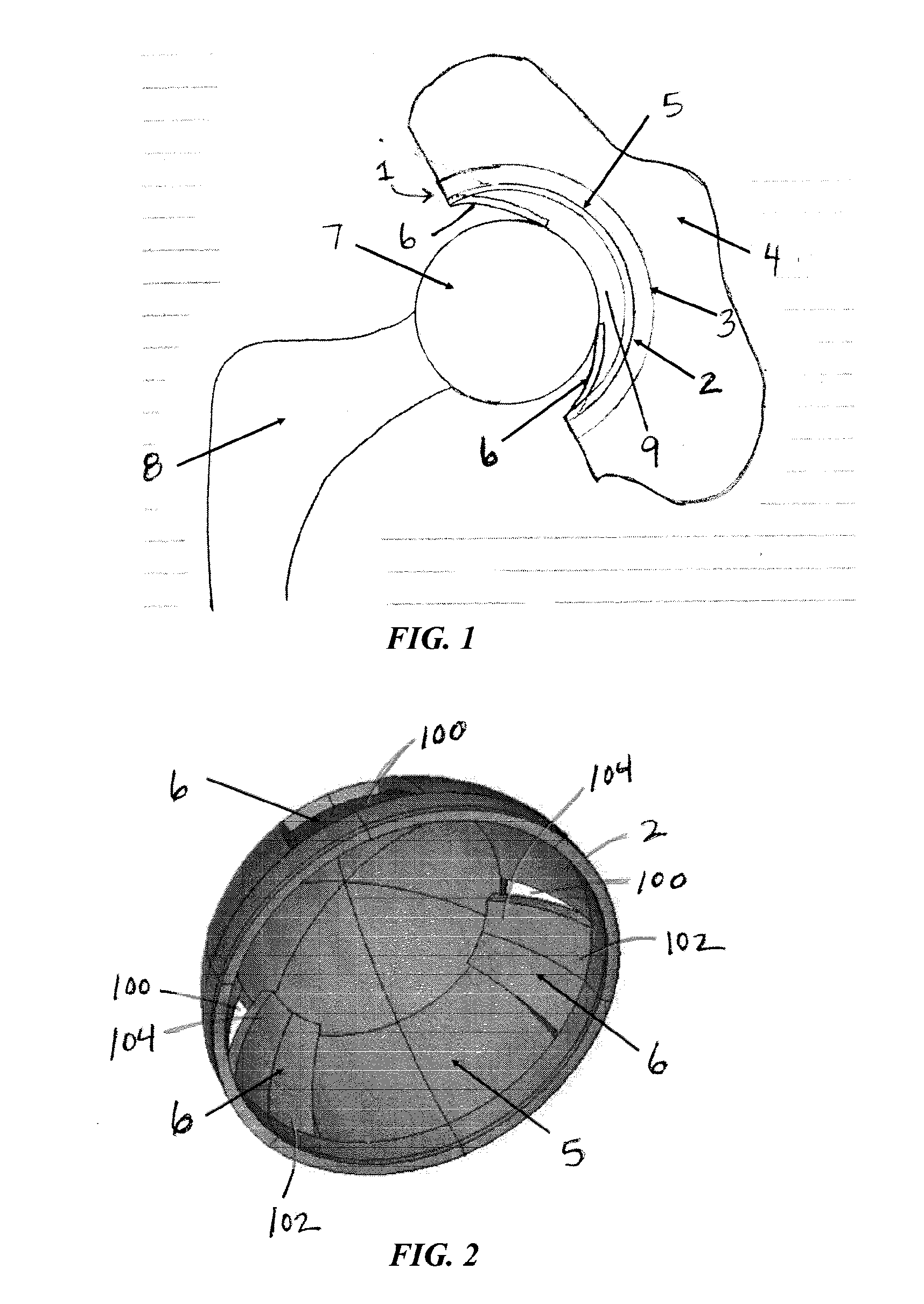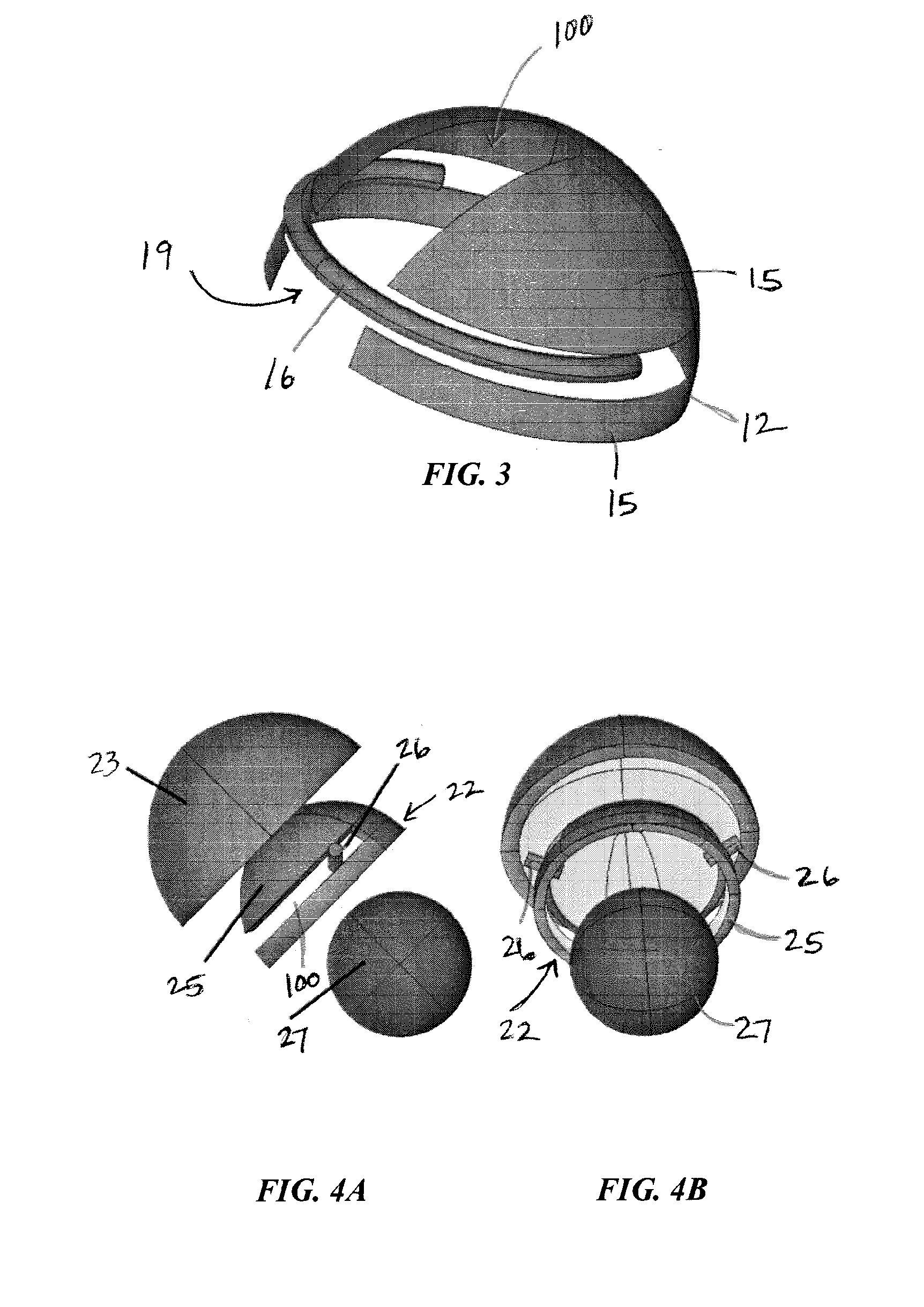An artificial hip joint replacement system
a hip joint and hip joint technology, applied in the field of artificial hip joint replacement systems, can solve the problems of reducing the life of the artificial socket, affecting the bearing performance of the joint, and reducing the resorption of living bone tissue surrounding the artificial socket, so as to improve the bearing performance, promote and enhance the action of joint synovial fluid, and alleviate the sole reliance on wedge film action
- Summary
- Abstract
- Description
- Claims
- Application Information
AI Technical Summary
Benefits of technology
Problems solved by technology
Method used
Image
Examples
example 1
An Elastic Squeeze Film Total Hip Replacement
[0090]Features of the Proposed Design
[0091]FIGS. 4A-C show anterior and lateral exploded views of one possible embodiment of the new artificial hip joint as installed in the human body. The acetabular cup is divided into “elastic” and “rigid” elements. Elastic columns in their unstressed state protrude into the ball-cup clearance space and maintain contact with the spherical ball surface over the entire gait cycle. A thin lubricant film is situated between the ball surface and the rigid portion of the cup. (Though the rigid portion of the cup has some inherent compliance, its denotation is meant only to distinguish from the elastic elements which are considerably more compliant.)
[0092]The elastic elements can be fabricated as a continuous piece integrated with the rigid portion of the cup or affixed to the shell backing. The rigid portion of the cup is attached to the shell in the usual manner through connections such as screws, an adhesi...
example 2
Planar Finite Elements
[0123]Formulation
[0124]FIG. 25 shows a planar triangular fluid film element arbitrarily oriented relative to a system X, Y, Z reference frame. The position vector of the element nodes are denoted as Si, i=1, 3, where |Si|=R2=R. Define nodal position vectors relative to the element centroid by
si=Si−(S1+S2+S3) / 3 (A1)
from which a set of orthonormal vectors u, v, n can be formed from
u=s1 / |s1| (A2)
n=s1×s2 / |s1×s2| (A3)
v=n×u (A4)
[0125]Vector n is normal to the element plane. Vectors u and v lie in the element plane and are employed as unit vectors for a ξ, η film reference frame with its origin at the element centroid. Nodal coordinates relative to the film reference frame are thus given by
Piξ=si·u (A5)
Piη=si·v (A6)
[0126]Nodal film thickness and its time rate of change are given by
hi=C−e·Si / R (A7)
dhi / dt=−de / dt·Si / R (A8)
[0127]For elements which are small compared with the cup radius, n≈Si / R, with the result that nodal ball surface velocity components in the fil...
example 3
Proportional Area Projection
[0137]Consider a differential surface area element (dA)s=R2 sin θdθdφ defined on the hemisphere shown in FIG. A2-A-B with R≡R2. The spherical differential area is mapped onto a plane with projected differential area
(dA)p=rdrdφ (B1)
[0138]Arbitrarily setting area ratio J≡(dA)p / (dA)s gives
JR2∫0θ sin θdθ=∫0rrdr (B2)
so that
r / R=(2J)1 / 2(1−cos θ)1 / 2 (B3)
[0139]A point with spatial coordinates X, Y, Z located on a hemispherical surface of radius R will be mapped to coordinates x, y on the plane using the relations
x=r cos φ (B4)
y=r sin φ (B5)
where
cos φ=X / (R sin θ) (B6)
sin φ=Y / (R sin θ) (B7)
with
cos θ=Z / R (B8)
sin θ=(1−cos2θ)1 / 2 (B9)
[0140]Simplifying gives
x=X[2J / (1+Z / R)]1 / 2 (B10)
y=Y[2J / (1+Z / R)]1 / 2 (B11)
[0141]Conversely, a point with coordinates x, y on the plane will be mapped to spatial coordinates X, Y, Z on a hemispherical surface of radius R using the relations
X=R sin θ cos φ (B12)
Y=R sin θ sin φ (B13)
Z=R cos θ (B14)
where
cos θ=1−(r / R)2 / (2J) (B15)
sin ...
PUM
 Login to View More
Login to View More Abstract
Description
Claims
Application Information
 Login to View More
Login to View More - R&D
- Intellectual Property
- Life Sciences
- Materials
- Tech Scout
- Unparalleled Data Quality
- Higher Quality Content
- 60% Fewer Hallucinations
Browse by: Latest US Patents, China's latest patents, Technical Efficacy Thesaurus, Application Domain, Technology Topic, Popular Technical Reports.
© 2025 PatSnap. All rights reserved.Legal|Privacy policy|Modern Slavery Act Transparency Statement|Sitemap|About US| Contact US: help@patsnap.com



